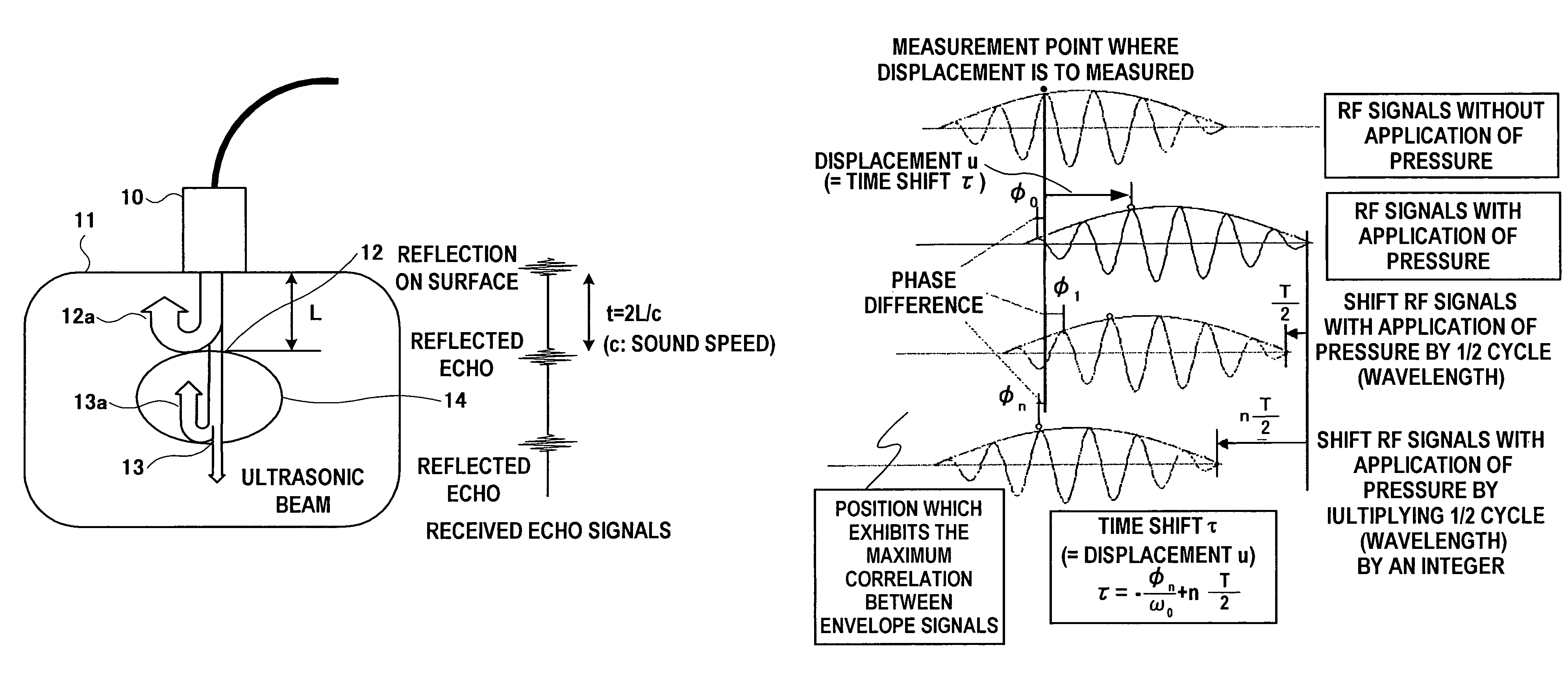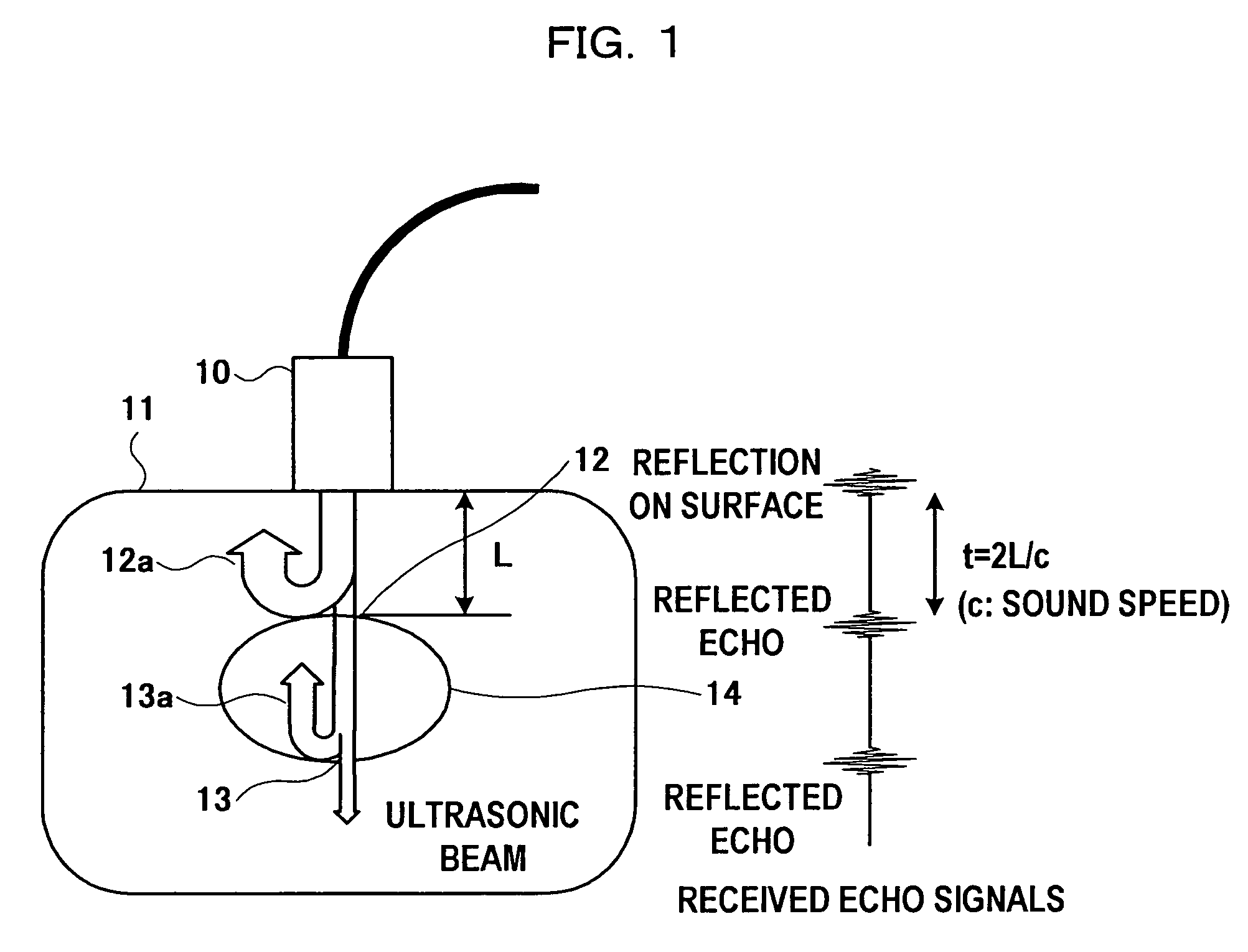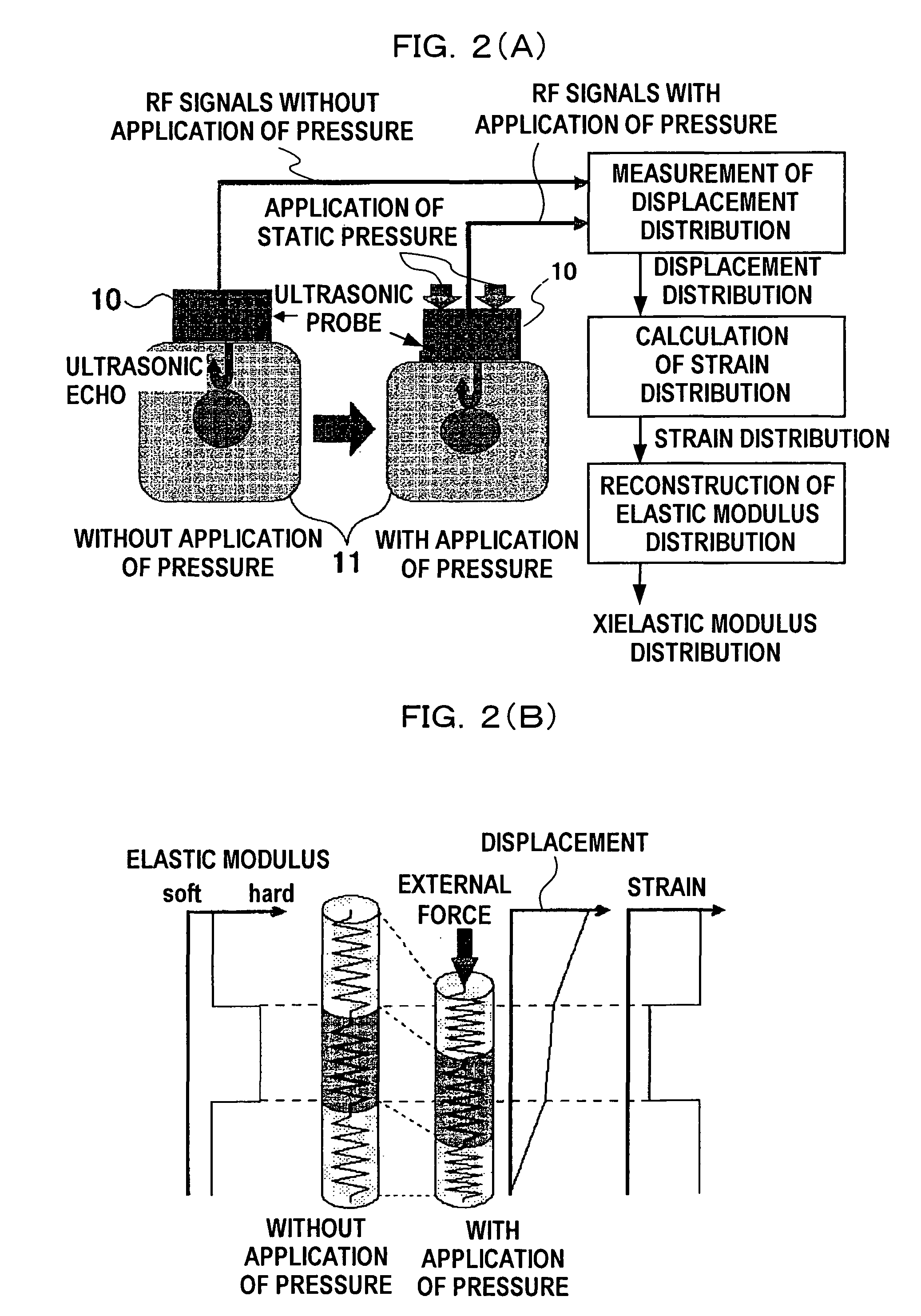Ultrasonic diagnosis system and strain distribution display method
a diagnostic system and ultrasonic technology, applied in the field of ultrasonic diagnosis system and strain distribution display method, can solve the problems of inability to realize real-time calculation and great calculation time, and achieve the effects of high precision, stable computation of elastic modulus distribution, and sufficient uniformity
- Summary
- Abstract
- Description
- Claims
- Application Information
AI Technical Summary
Benefits of technology
Problems solved by technology
Method used
Image
Examples
Embodiment Construction
[0044]Description will be made below regarding an ultrasonic diagnosis system according to an embodiment of the present invention with reference to the accompanying drawings. An ultrasonic diagnosis system according to the present embodiment employs a method which is referred to as “expanded combined autocorrelation method” wherein the processing for one-dimensional detection by correlation calculation based upon the envelope signals using the combined autocorrelation method through a one-dimensional window is expanded to handle the displacement in the horizontal direction by two-dimensional detection through a two-dimensional correlation window. Furthermore, with the expanded combined autocorrelation method according to the present embodiment, envelope-correlation calculation is performed for only the grid points set with a pitch of half the wavelength of the ultrasonic wave in the axial direction, and with the beam-line pitch in the horizontal direction for reduction of calculatio...
PUM
 Login to View More
Login to View More Abstract
Description
Claims
Application Information
 Login to View More
Login to View More - R&D
- Intellectual Property
- Life Sciences
- Materials
- Tech Scout
- Unparalleled Data Quality
- Higher Quality Content
- 60% Fewer Hallucinations
Browse by: Latest US Patents, China's latest patents, Technical Efficacy Thesaurus, Application Domain, Technology Topic, Popular Technical Reports.
© 2025 PatSnap. All rights reserved.Legal|Privacy policy|Modern Slavery Act Transparency Statement|Sitemap|About US| Contact US: help@patsnap.com



